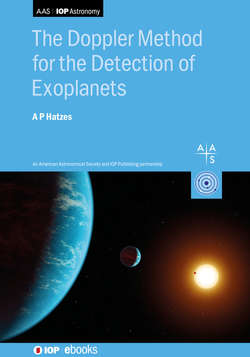Читать книгу The Doppler Method for the Detection of Exoplanets - Professor Artie Hatzes - Страница 26
На сайте Литреса книга снята с продажи.
2.3.1 The Structure and Operation of a CCD
ОглавлениеFigure 2.12 shows the basic structure of single CCD element or pixel (“pixel element”). It has two layers of silicon substrates that are in contact. One is doped such that it has an excess of electrons (n-Si type) and the other doped such that it has an excess of positive charge (p-Si type), often referred to as “holes.” On top of the Si substrate is an insulating material of silicon dioxide, and finally polysilicate gates for controlling the voltages.
Figure 2.12. The structure of a CCD pixel and the charge readout. The pixel has three gates with an applied voltage. Below these is an insulating layer of SiO2. The silicon substrate is doped to have excess (n-Si) or depleted (p-Si) electrons. (Left) Photons striking the substrate collect under the potential well of the central gate. (Center) A positive voltage is applied to the left gate, causing the potential well to reside under the center and right gate. (Right) After applying a negative voltage to the central gate, the charge has been completely transferred to the potential well under the right gate.
At the p–n junction, electrons from the n-type material diffuse into the p-type and fill the extra holes. This diffusion results in the n-Si being positively charged and the p-Si negatively charged. This creates an electric field that ultimately slows and stops the diffusion process.
The boundary where the holes and electrons have combined is called the depletion zone, and this is the photosensitive part of the CCD pixel. By applying a voltage, one can increase or decrease the electric field across the depletion zone, and this controls the flow of current between the two Si substrates. Photons striking the depletion zone dislocate electrons from Si atoms via the photoelectric effect. Because of the applied voltage (+V) of the polysilicate gate, these remain trapped in the potential well of the depletion zone.
After exposing the CCD and accumulating charge, one needs to transfer and record the charge packet. This is done by phasing (clocking) the voltages of the adjacent gates, the process shown in Figure 2.12. Applying a +V voltage to the right gate allows the charge packet to straddle two of the gates. By changing the central voltage to −V, we have now transferred the charge packet in the pixel to the right gate. In this way, the charge packet can be transferred from pixel to pixel in the so-called “bucket brigade.”
A schematic of the basic operation of the CCD is shown in Figure 2.13. Charge packets are first transferred along a parallel register (along columns). On the final row, charge is shifted along a serial register and an amplifier, where the charge is read, converted to analog-to-digital units (ADUs) and stored on a computer.
Figure 2.13. Schematic of the operation of a CCD. Charge packets are first transferred along columns in the clocking direction. The last row is then read in the serial direction and into the amplifier. The overscan region is masked off so as not to record light. The numbers on each corner represent the number of recorded photons for 1000 detected photons. Losses are due to charge transfer inefficiency.
The readout time of a CCD can range from approximately 10 s to several minutes, depending on the size of the CCD and the control electronics. Most of the time is spent along the serial register, especially the last one, where the charge is read out. The transfer along columns and then along rows is relatively fast (of order milliseconds) compared to the charge transfer along rows.
In order to speed up the readout process, some CCDs have amplifiers at each corner of the array. This will decrease the readout time by a factor of 4. In these cases, the user has the option of using either one or four amplifiers in the readout. This speed, however, comes at a price. In this case, each amplifier and readout electronics has its own characteristics, read noise, etc. You have essentially converted your single CCD chip into four independent detectors so the data from each quadrant will have to be treated as four independent data sets. The factor of four in time savings by the reduced readout time of the CCD now translates into at least a fourfold increase in the time needed to reduce the data. For spectroscopy, this can cause problems as a spectral order now straddles two quadrants. For RV work, it is advisable not to use multiple amplifiers in the readout.
